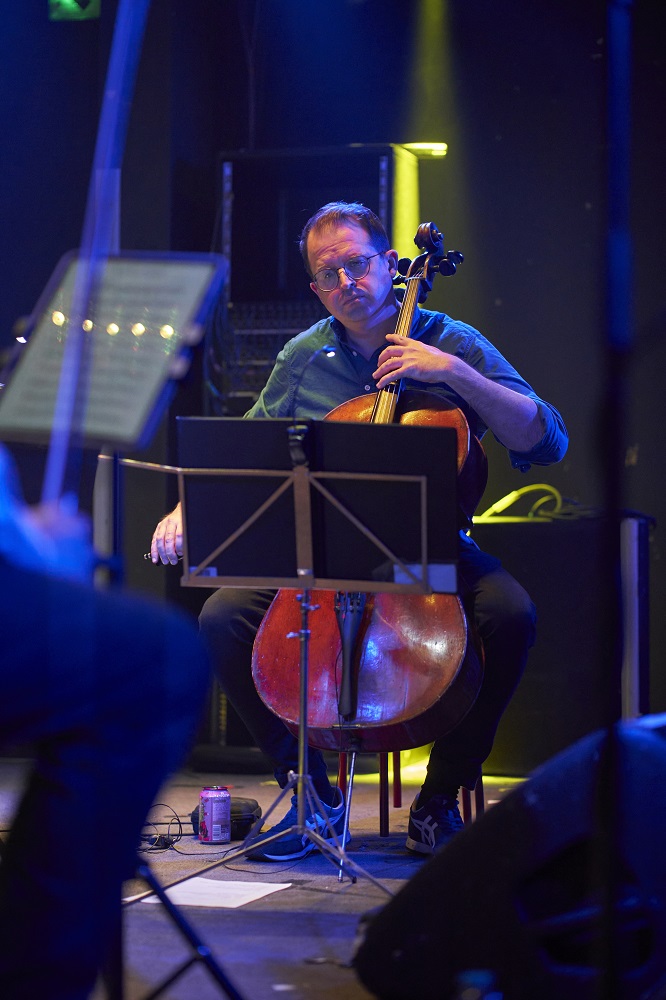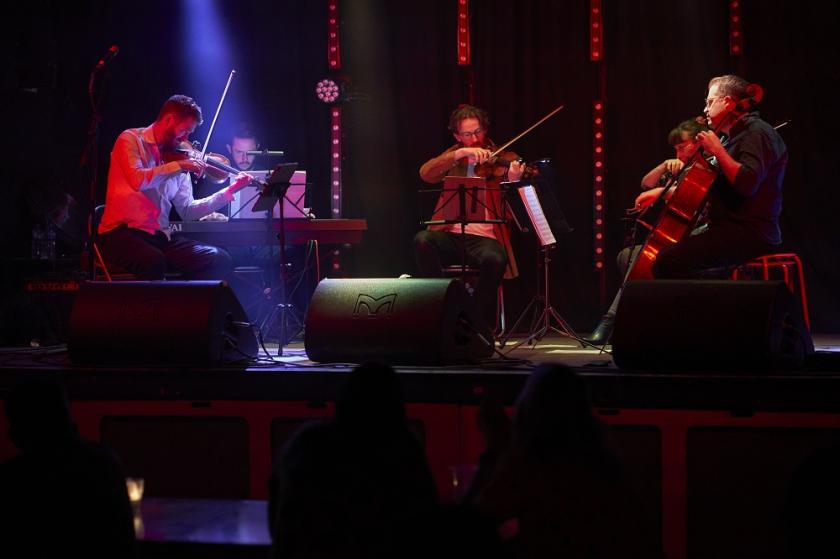For musicians, the period from early 2020 to mid-2021 was one of great reflection, with so many questions to puzzle over. Could we satisfy the basic need to interact with others and express ourselves? What on earth was Zoom, and how, as performers, could we learn to use technology to provide live experiences? Would things ever go back to the way they were? And should they?
Avenue Ensemble was a concept that I began to sketch out during the pandemic. It was partly inspired by the longing to perform chamber music with friends once again when restrictions were finally over, but predominantly due to long held frustrations over how the art form and industry I usually work within is presented to the world. I am a freelance violinist and my work is fairly varied: I perform regularly with professional orchestras, opera companies, choral societies and musical theatre productions, and also very occasionally with orchestral projects within the popular music world.
 It has long since been my view that there is an imaginary wall between "classical" music and almost all other music, an intangible barrier which prevents many people from engaging with the likes of orchestral concerts, chamber music recitals, opera and ballet. We have some of the finest orchestras and musicians in the world here in the UK, but I fear for the future of an industry which many perceive to be stuck in the past and relies on this excellence alone to attract new audiences.
It has long since been my view that there is an imaginary wall between "classical" music and almost all other music, an intangible barrier which prevents many people from engaging with the likes of orchestral concerts, chamber music recitals, opera and ballet. We have some of the finest orchestras and musicians in the world here in the UK, but I fear for the future of an industry which many perceive to be stuck in the past and relies on this excellence alone to attract new audiences.
My friend Dan Bull (pictured below), a cellist and founder member of Avenue Ensemble, pointed out to me during the pandemic that the word “crisis” comes from an Ancient Greek word meaning “change” or “turning point”. So, the goal was to use this bleakness as an opportunity and come back with something new, something different to what we did before. Presenting classical music in a different way is not a new idea per se, and I’m not suggesting we’re revolutionising classical music with what we do, but I truly believe that there are many people out there who might not fancy an evening sitting silently in a concert hall or an opera theatre, and that this should not exclude them from enjoying live classical music.
We want to engage new audiences, but I think we have to go further than “under 30 schemes” and ticket offers. Simply saying “Hey, this is really good - you should get into this – here, have some cheaper tickets…” may work with a few, but will do nothing to address the invisible wall.
 The mission of Avenue Ensemble is to take what we do (ie. high quality chamber music) and perform for people who are there to enjoy a night out with friends. Our programmes are usually eclectic and we keep items on the short side. Our first performance was in the summer of 2021 and took place at a brewery in Leeds. Our Winter is Coming show at the city’s Belgrave Music Hall in 2022 contained music by Vivaldi, Max Richter, John Williams and Joni Mitchell. Our message to audiences is that it is just music, and that it’s wonderful. You don’t need any prior knowledge or be from any particular background to enjoy it.
The mission of Avenue Ensemble is to take what we do (ie. high quality chamber music) and perform for people who are there to enjoy a night out with friends. Our programmes are usually eclectic and we keep items on the short side. Our first performance was in the summer of 2021 and took place at a brewery in Leeds. Our Winter is Coming show at the city’s Belgrave Music Hall in 2022 contained music by Vivaldi, Max Richter, John Williams and Joni Mitchell. Our message to audiences is that it is just music, and that it’s wonderful. You don’t need any prior knowledge or be from any particular background to enjoy it.
We often try to tap into a few areas of popular culture which may help younger and more diverse audiences to relate to the performances, such as performing music from film, TV series, video games and so on. We can’t take down the whole wall, but we do what we can to remove a few bricks. We don’t wear formal concert dress, and audience members are free to move around as and when they need to or want to. We always try to wear contact mics where we can so that we are still audible if audiences want to chat during the music. We interact with the audience as much as possible (including often putting on a music quiz) and there are no paper programmes (you’re there to have fun, there are no tests!). We actively encourage an atmosphere of fun and even rowdiness, and we (the musicians) have been known to have a pint or a glass of wine on stage with us… depending on the repertoire, that is!
Strings at Night is an exciting project which we will be bringing to the Wardrobe in Leeds on Monday 4 March. The first half will be a typical kind of show for us - a kind of pick & mix of short pieces of string music inspired by the night, including music by Mozart, Borodin, Richter and Brahms. The second half though is the main event - our world premiere of Schoenberg’s Verkärte Nacht (Retold): where the iconic work will be performed alongside a new story written and narrated by George Wigzell. George and I were at school together and very close friends to this day. He has been working as an actor for many years and we instantly connected to a shared vision for this project. What he has come up with, and what we have put together, is something I’m very proud of and hopefully something that will resonate with audiences.
In George’s words, “the poem that inspired Schoenberg’s piece is about shame and the transformational effect of the night. I was interested in exploring these themes in a modern setting and bringing in contemporary themes of the cost of living crisis and toxic masculinity. Responding to a piece of music has been a fascinating process for me as a writer. The tone of the music is so emotive - at times romantic, at others dark and turbulent - it was impossible not to be swept up in it! I’ve loved this process and can’t wait to share the results. Particularly in this amazing venue, a place I’ve been seeing music in my whole life.”














Add comment